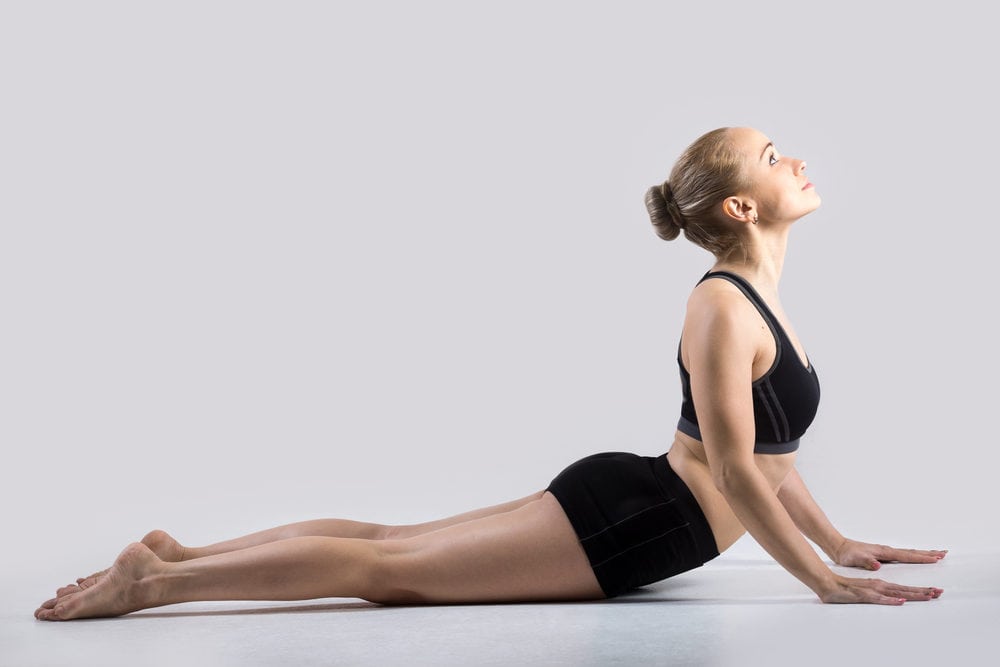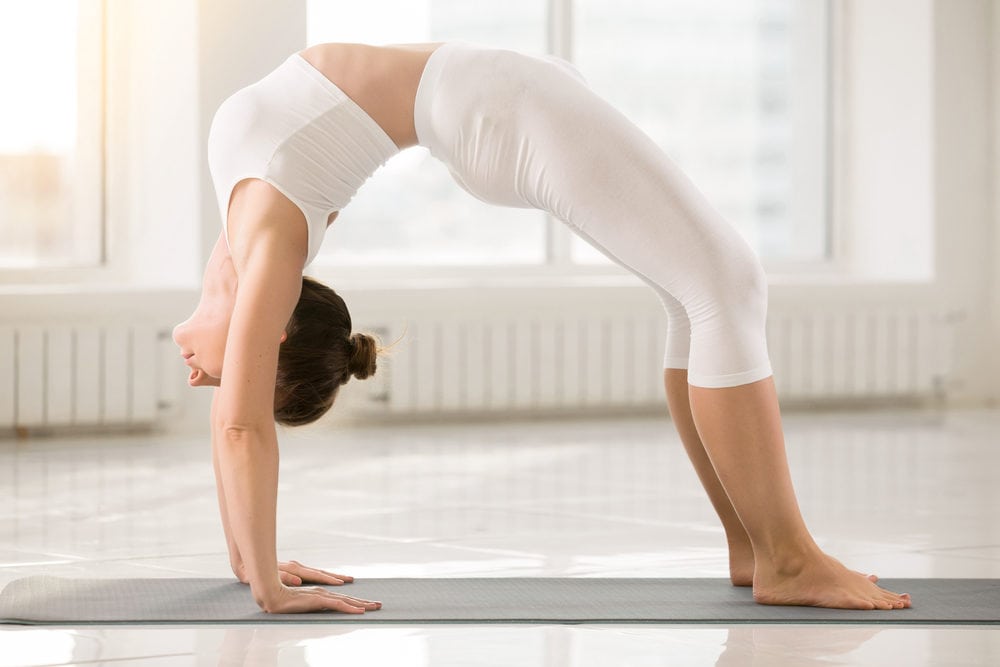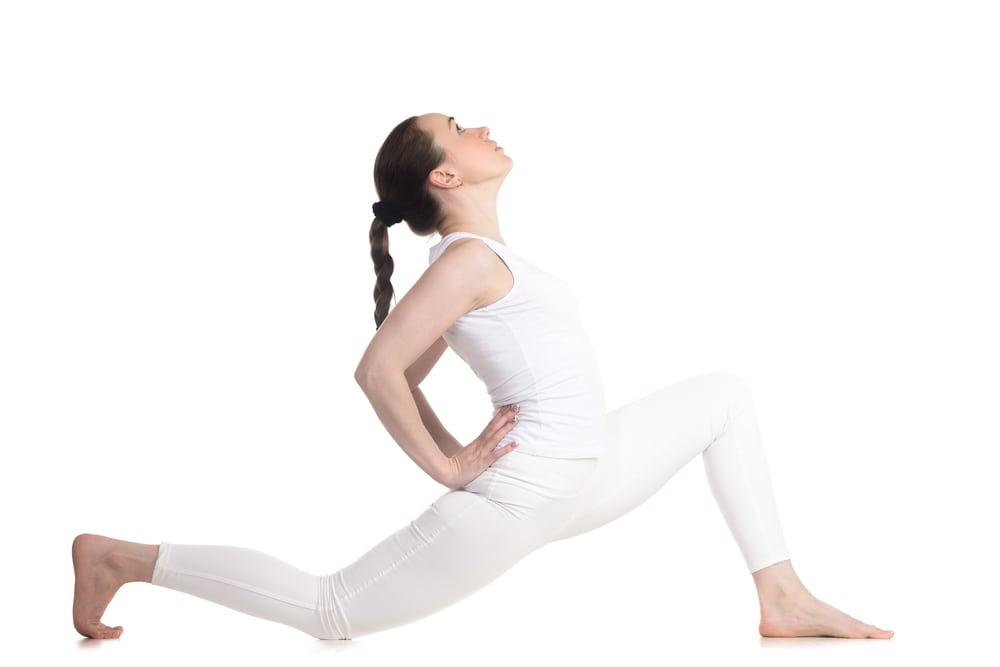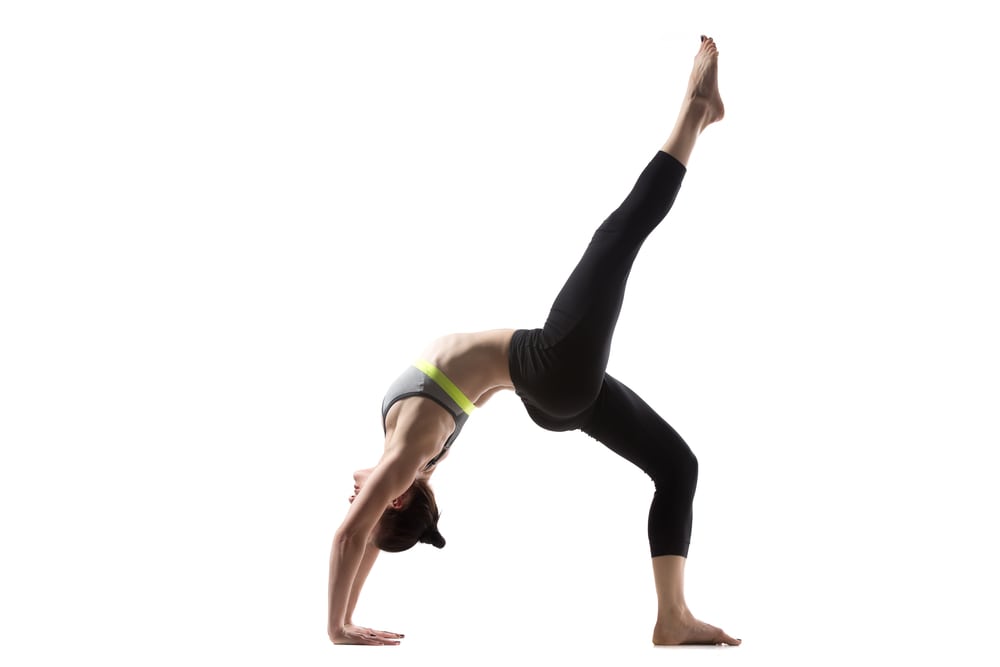

In this lesson, we examine backbending poses as a category, and ways to apply this knowledge in teaching.
Objective
Become proficient in the nature and effects of backbending poses, and considerations for wisely teaching and sequencing them.
Description
Describe the primary effect of backbends and a secondary effect that is experienced in active backbends. Define the anatomical term “extension” and explain what is meant by spinal extension in yoga. List categories of backbends, the actions that characterize them and an example of each. Describe the general physical and energetic effects of backbends. Define “nutation and “counternutation” and explain the proper action of the sacrum during backbending. Explain the circumstances under which students will likely benefit from contracting the glutes in backbending and when it is usually best to relax the glutes. Describe low body engagement and alignment practices to support healthy backbending. Describe sequencing considerations and provide a list of backbending poses.
Vocabulary
anuvittasana, ardha bhekasana, backbending poses, bhekasana, bhujangasana, chatush padasana, counternutation, dhanurasana, drop back, dwi pada pitham, hasta uttanasana, mandukasana, matsyasana, nutation, purvottanasana, salabhasana, salamba bhujangasana, setu bandhasana, supta virasana, urdhva dhanurasana, urdhva mukha svanasana, ustrasana

Backbends stretch the front of the body. In active (as opposed to passive or restorative) backbends, there is the secondary effect of strengthening the back muscles.
Spinal extension is the movement required for an active backbend.
While the terms “extension” and “backbend” are often used interchangeably they technically have different meanings:
The ability to bend backward varies due to a person’s skeletal structure, postural habits, practice and experience.
Additionally, the different areas of the spine have differences in their inherent stability and mobility: the cervical spine has the greatest mobility followed by the lumbar, with the thoracic spine having the least inherent mobility. (source)
The Uniqueness of Individual Skeletons Makes a Major Impact
A great deal of variation exists between lumbar spines, including differences in the number of lumbar vertebrae you may have (anywhere from four to six) and the natural amount of backward curve (called lordosis) you may possess (anywhere from 29° to 69°). Another key variation that has a dramatic effect on your backbends are your spinous processes. Spinous processes are the bumpy bits of our vertebrae that you can feel when you palpate your spine. Some people have big spinous processes… and some rare individuals may have one or two missing completely! … Imagine the students who possess the lumbar spines shown in figure 1 doing cobra pose as shown in figure 2 (above)… Notice the spaces between the spinous processes… The student on the left has very small gaps. Indeed, between L4 and L5 there is no gap at all. His processes are already kissing, so there is no room for any extension at this joint. But this need not disqualify him from moving to his natural limits or from doing his yoga practice with attention and intention. – Bernie Clark, Yoga International link
Backbends can be practiced from a variety of foundations, including standing, kneeling, supine and prone.
Olga Kabel distinguishes these four types of backbends here: 1) prone, 2) downward arch, 3) upward arch, and 4) asymmetrical. See more on each below.





Addressing the Imbalance of Front and Back Body
Because our eyes are on the front of our heads, most things we do tend to take place in front of us. Over the years, the muscles in our front body can start to shorten as the muscles in the back body are neglected, resulting in an imbalance that can lead to a forward head position, slumped shoulders, and, in extreme cases that usually also involve osteoporosis, vertebral compression fractures. The more focus we have on keeping our natural curves of the spine and on maintaining a balance between front and back body strength, the fewer the complications that can arise as we age. – Bridget Frederick link
Backbends Counter Modern Postural Tendencies
Given today’s increasingly sedentary lifestyle, we spend so much time sitting in spine and hip flexion that the muscles on the back of the body (especially the glutei maximi, posterior deltoids, infraspinati, mid and lower trapezii, and rhomboids) tend to weaken and the muscles on the front of the body (especially the anterior deltoids, pectorales majores and minores, and the hip flexors) tend to shorten or tighten. Backbends are incredibly beneficial to counter these tendencies. – Rachel Land link
Stabilizing the Core by Strengthening the Spinal Extensors
Most of the time, when we think of stabilizing the core, abdominal strengthening comes to mind. While weak abdominals do contribute to back pain and postural problems, abdominal strengthening is only half of the equation. Weak back muscles contribute equally to these issues… In my experience, the yoga poses that are most supportive of strengthening the spinal extensors are… poses such as Salabhasana (Locust Pose), Bhujangasana (Cobra Pose), and… Setu Bandha Sarvangasana (Bridge Pose). – Charlotte Bell link
Energetically, backbends are stimulating and energizing, and serve as a wonderful antidote for stress and fatigue. – Julia Lee, DoYou, How To Do Bow Pose link
Fear & Misunderstanding
A healthy spine should be able to bend forward, backward, rotate and bend laterally. However, more often than not, the one direction of movement that has the most fear and misunderstanding associated with it are backbends. – Kate Heffernan, YogaUOnline), Teaching Yoga to Beginners: Skillful Action in Cobra Pose and Upward Facing Dog link


Quite often, there is tightness in the upper back. As a result, the more flexible parts of the spine (the neck and low back) may compensate.
The Target is Thoracic Mobility, but Often We See Excessive Pressure on Lumbar Spine
On an anatomical level, the main reason to practice backbends is to find thoracic spine mobility in the direction of extension. But spinal motion is dependent on many individual joints, and we all have certain spinal joints which move quite easily and others which feel more “stiff” or “stuck.” … When we allow rib thrust to happen in our backbends … instead of a well-distributed curve throughout the whole spine, there is very little curve in the upper and mid back, and too much curve in the low back. This movement pattern is extremely common in backbends, and ends up placing excessive compressive and shearing forces on the lumbar spine.– Jenni Rawlings link
In backbending, the top of the sacrum rotates forward, moving into the body, causing the tailbone to lift. In the study of biomechanics, this action is called “nutation.”
Doug Keller explains that in Tadasana (Mountain Pose), the pelvis is unmoving and to keep it stable, we may “slightly scoop the tailbone down and forward,” resulting in the sacrum being in counternutation (top of the sacrum rotated back). He explains that counternutation doesn’t apply during backbending and forward bending. (For much more on the topic of “tucking” or “scooping” the tailbone, see Problem Cues: Spine & Pelvis.)
When you bend backward or forward… the top of the sacrum automatically nods forward beyond its neutral position, and the tailbone shifts slightly backward. Studies show that this sacral nutation in spine-bending poses stabilizes the sacrum within the pelvic bones in a more secure and less vulnerable position than counternutation, where, particularly with backbending, you may be more at risk of pinching the tissues within the SI joints, forcing the SI joints into misalignment, or otherwise straining or jamming your low back. – Doug Keller, Yoga International, 5 Steps to Safer Backbends link
Regarding glute actions during backbending, we recommend studying the thinking shared by these experienced and thoughtful teachers:
Prone vs Kneeling & Supine Backbends
Prone backbends probably don’t benefit as much from gluteal contraction because the weight of the pelvis rests on the floor during these postures. This means that you don’t need gluteal strength to lift the pelvis because it stays on the ground in the pose; you also don’t need the stabilization that the glutes provide because the pelvis is supported by the floor. In kneeling backbends and supine backbends, gluteal engagement is more helpful. These postures produce a greater degree of spinal extension so it’s even more important that the pelvis and spine move cohesively. Engaging the glutes near the hamstring insertion, will help maintain this balance by rotating the pelvis slightly back over the top of the legs. This will help reduce lumbar compression.. If you don’t use the glutes in these postures, you might unnecessarily burden less efficient muscle groups. – Jason Crandell, Backbends: When and Why to Engage your Glutes link

Doug Keller provides clear instructions here. For more, see The TA and Engaging Deeper Abs.
Pulling the abdominals gently inward and upward in a backbend increases your range of motion because it creates a deeper stretch in the rectus abdominis muscles. – Ryan Peacock quoting David Magone link
Students may tend to avoid working the legs, causing the pressure to be put in the back. Instead, encourage active leg engagement, and inspire students to take notice of the corresponding sensation of more space for the spine.
I tell my students, “The action of the legs is 50% of a backbend.” Extend vigorously through your legs, sending energy away from the lower back and out towards the feet. – Jeanne Heileman, DoYou, How to Keep the Back Safe in Yoga Backbends link
In backbends, internally rotating the thighs relieves compression in the spine. When hips are externally rotated, knees will splay out and the external hip rotators will contract.
[In Upward Bow / Wheel Pose,] practitioners often push their inner thighs up because it makes them feel like they are lifting higher. But this can cause the glutes to grip, which in turn forces the sacrum to lift and puts pressure on the lumbar spine. “For any backbend, you may have to engage your glutes to get off the floor, but then it’s helpful to turn your internal rotators on and let your glutes go. This allows you to soften your groins and lengthen your iliopsoas and lower back,” Annie Carpenter says. – Ryan Peacock link
We hope you found this excerpt from our Member site useful and inspiring.
The backbending section on the Member site also includes:
We’ve worked hard to bring such excellent support for these other asana categories as well: